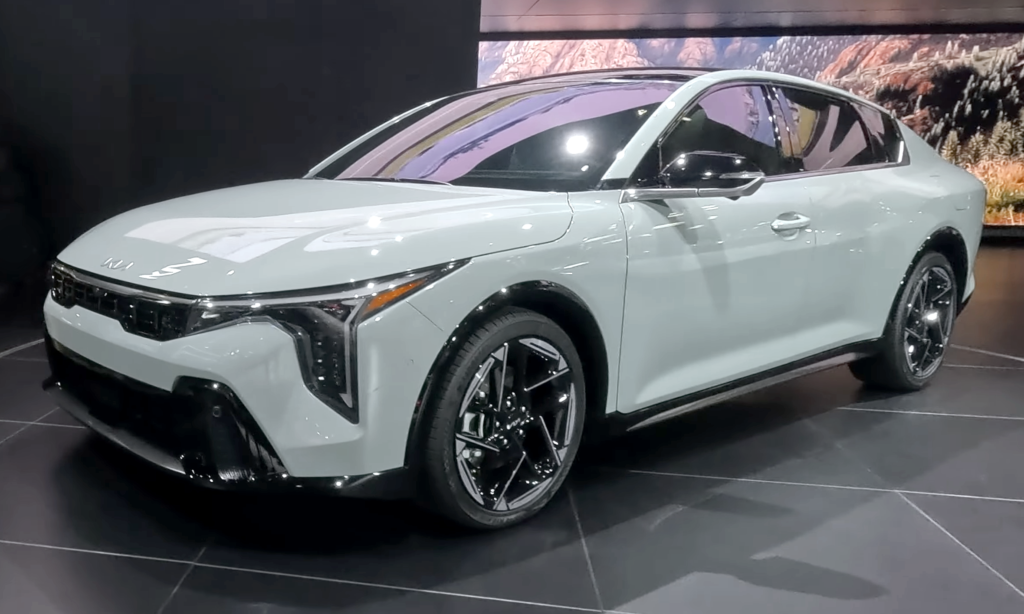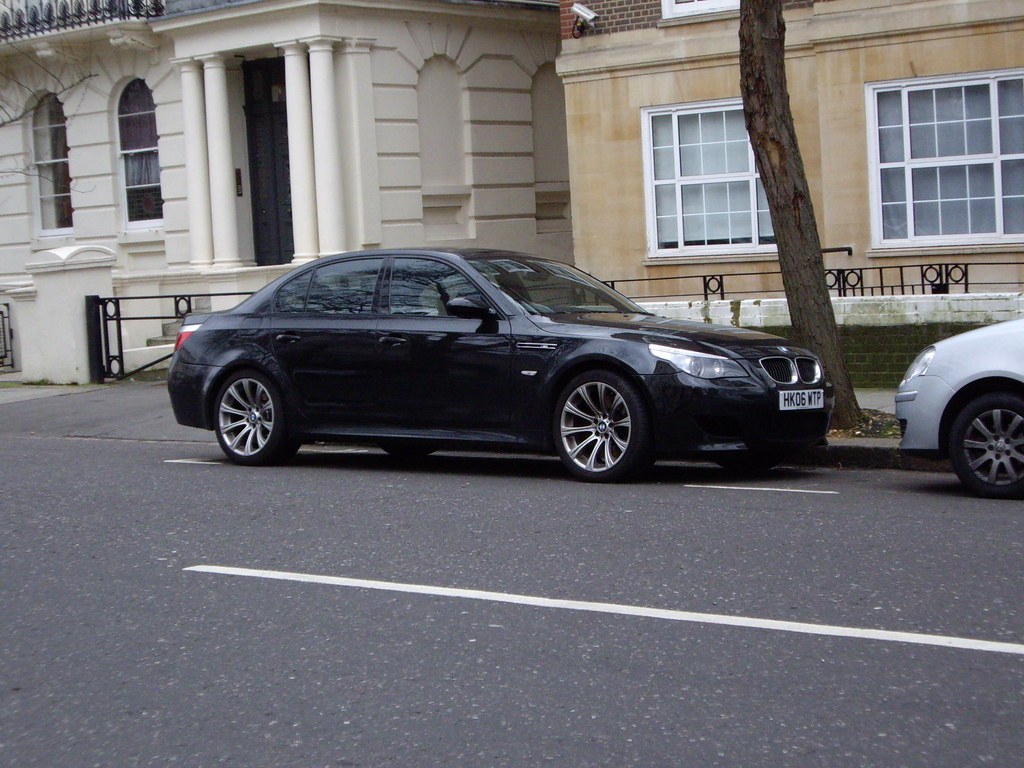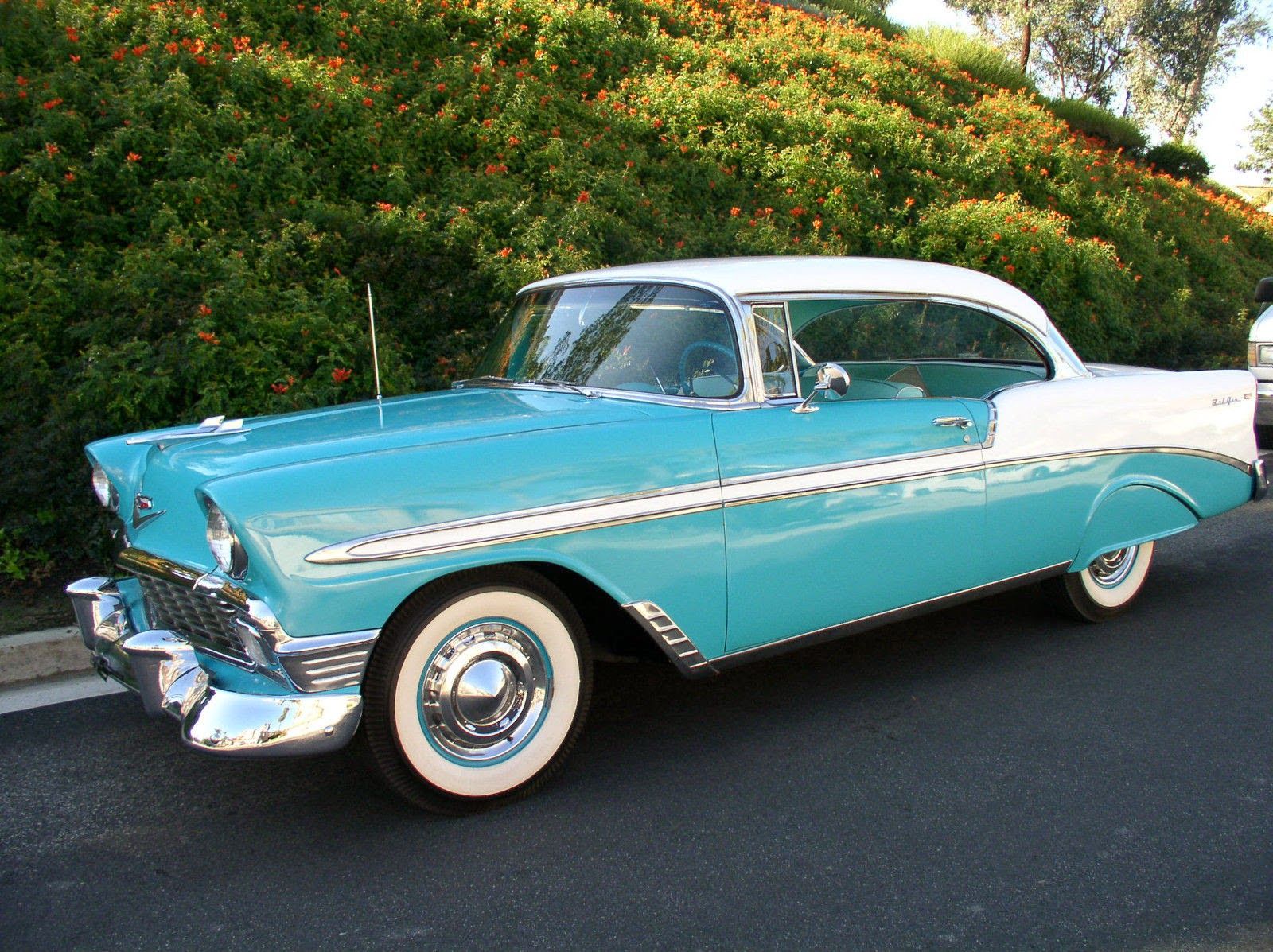
There’s an undeniable magic that emanates from classic cars, a distinct charm that modern vehicles, for all their technological prowess, often struggle to replicate. From the satisfying thrum of a vintage engine to the tactile feedback of an analog driving experience, these automotive icons captivate the hearts of drivers young and old, reminding us of a time when driving was a more visceral engagement. Many enthusiasts dream of owning one, but a persistent question often looms: can these cherished relics truly stand up to the rigors of daily life in 2025?
Indeed, the notion of daily driving a classic often conjures images of roadside breakdowns and endless repairs. Yet, our exploration reveals a captivating truth: many classic cars are surprisingly economical to maintain and perfectly suited for daily use, offering a unique blend of timeless style and practicality. They challenge the misconception that vintage means unreliable, proving that with the right choice and proper care, a classic can be a dependable companion on your everyday commute, turning routine journeys into genuine adventures.
So, prepare to embark on a fascinating journey with us as we spotlight a curated selection of the best classic cars and trucks that are not just beautiful to behold, but also remarkably capable of being your trusty daily steed. We’ll delve into their unique attributes, surprising affordability, and the sheer joy they bring, proving that you don’t have to sacrifice style or soul for reliability and performance. Get ready to rethink what a daily driver can be, because these timeless machines are eager to hit the road every single day.
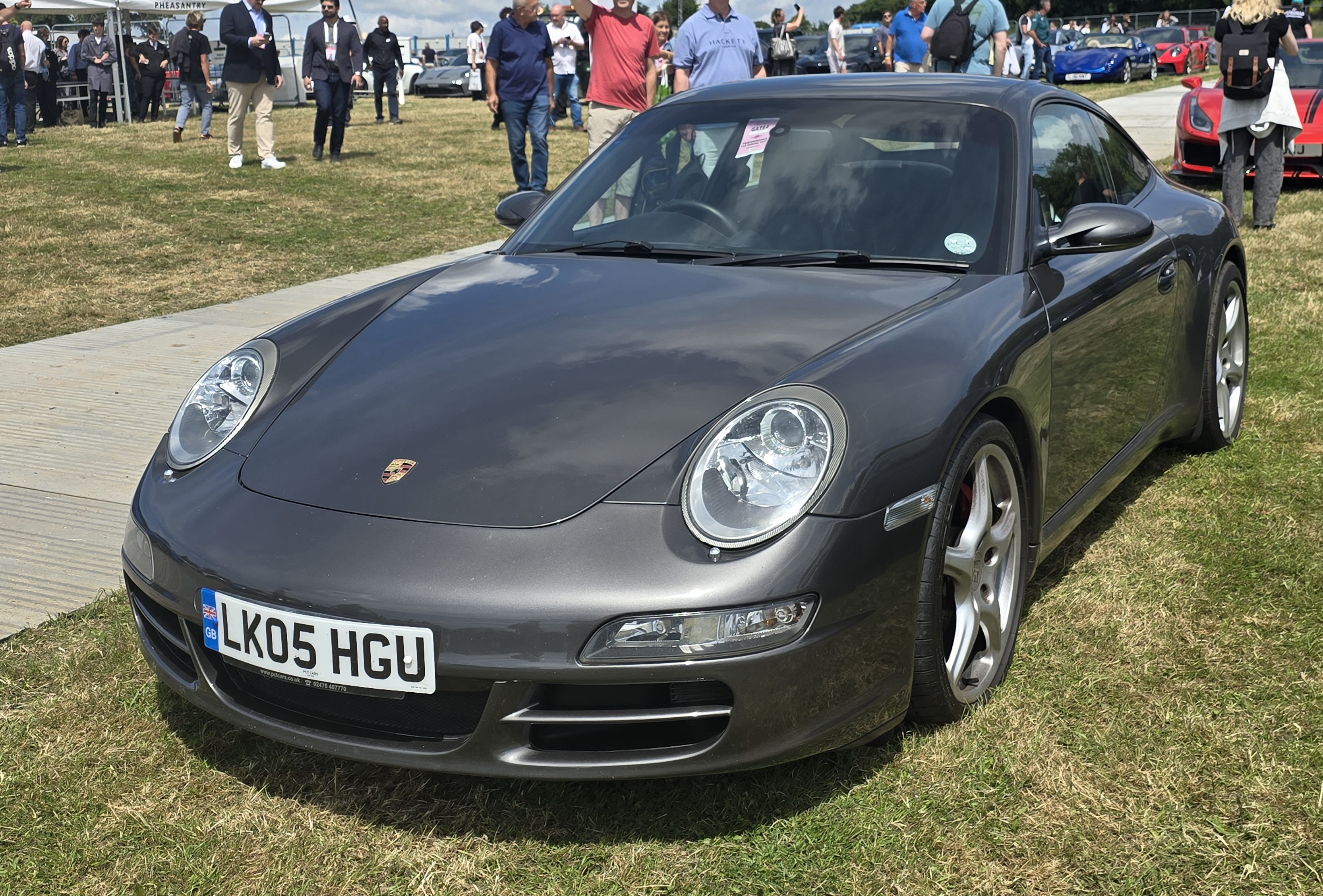
1. **Porsche 911 (2005-2015)** For many, the Porsche 911 represents the pinnacle of sports car engineering, and the 997 generation, produced between 2005 and 2015, stands out as a remarkable daily driver. This particular iteration seamlessly marries thrilling performance with an unexpected degree of everyday usability, making it a dream for enthusiasts who crave excitement without sacrificing practicality. It’s a car that feels as at home on a spirited weekend drive as it does navigating the daily grind.
Renowned for its dependable flat-six engine and exquisitely balanced handling, the 911 offers an intuitive and rewarding driving experience at every turn. It possesses a precision that makes it easy to pilot, yet its depth of engineering ensures that it constantly engages the driver. Modern refinements have smoothed out many of the rough edges typically associated with high-performance vehicles, allowing it to feel as manageable and predictable as a regular hatchback, but with an unmistakable aura of luxury and raw capability.
Despite its prestigious badge and formidable performance credentials, this 911 generation remains a surprisingly sensible choice for daily use. With used prices typically ranging from $48,100 to $113,000, it offers a slice of automotive aristocracy that’s within reach for many. Furthermore, its average yearly maintenance costs hover around $1,072, which, while not insignificant, is a reasonable figure for a vehicle of this caliber, providing enthusiasts with a robust and genuinely prestigious classic that’s built for regular enjoyment.
Car Model Information: 2024 Porsche 911
Name: Porsche 911
Caption: The 1 millionth 911 produced on display at Volkswagen Group Forum, Berlin
Designer: Ferdinand Alexander Porsche
Manufacturer: Porsche
Production: September 1964 – present
Assembly: Stuttgart,Baden-Württemberg
Class: Sports car
BodyStyle: unbulleted list
Related: unbulleted list
Layout: Rear-engine design,rear-wheel drive
Predecessor: Porsche 356
Categories: 1970s cars, 1980s cars, 1990s cars, 2+2 coupés, 2000s cars
Summary: The Porsche 911 model series (pronounced Nine Eleven or in German: Neunelf) is a family of German two-door, high performance rear-engine sports cars, introduced in September 1964 by Porsche AG of Stuttgart, Germany, and now in its eighth generation. All 911s have a rear-mounted flat-six engine, and usually 2+2 seating, except for special 2-seater variants. Originally, 911s had air-cooled engines, and torsion bar suspension, but the 911 has been continuously enhanced, and evolved across generations. Though the 911 core concept has remained largely unchanged, water-cooled engines were introduced with the 996 series in 1998, and front and rear suspension have been replaced by Porsche-specific MacPherson suspension up front, and independent multi-link rear suspension.
The 911 has been raced extensively by private and factory teams, in a variety of classes. It is among the most successful competition cars. In the mid-1970s, the naturally aspirated 911 Carrera RSR won world championship races including Targa Florio and the 24 Hours of Daytona. The 911-derived 935 turbo also won the 24 Hours of Le Mans in 1979. Porsche won the World Championship for Makes in 1976, 1977, 1978, and 1979 with 911-derived models.
In a 1999 poll to determine the Car of the Century, the 911 ranked fifth — one of two in the top five that had remained continuously in production (the original Beetle remained in production until 2003). The one millionth example was manufactured in May 2017 and is in the company’s permanent collection.
Get more information about: Porsche 911
Buying a high-performing used car >>>
Brand: Porsche Model: 911
Price: $239,888 Mileage: 6,944 mi.
2. **Mazda MX-5 (1990-1997)** The first-generation Mazda MX-5, often affectionately known as the “Miata,” set a new standard for lightweight, affordable driving enjoyment, and its legacy continues to resonate with enthusiasts today. This delightful roadster, manufactured between 1990 and 1997, is more than just a car; it’s a benchmark for what a fun, analog driving experience should embody, proving that pure automotive pleasure doesn’t require a hefty price tag. It’s a testament to focused engineering.
What makes the MX-5 so enduringly popular as a daily driver is its straightforward engineering and precise, communicative handling. Every input feels direct and responsive, cementing its status as a firm favorite among those who prioritize a fun, dependable, and engaging car for their everyday adventures. It’s a vehicle that constantly encourages you to find the twisty route home.
Adding to its appeal are its remarkably low maintenance costs, averaging a mere $565 annually, which makes ownership a breeze. With used prices typically falling between $9,500 and $15,200, the MX-5 delivers exceptional driving excitement and timeless style at an incredibly reasonable cost. This secures its place not just as a classic, but as an accessible and utterly joyful one, perfect for top-down cruising or spirited sprints on a sunny afternoon.
Car Model Information: 2023 Mazda MX-5 Miata Club
Name: Mazda MX-5
Manufacturer: Mazda
Aka: unbulleted indent list
Production: 1989–present
Assembly: Hiroshima
Class: Roadster (car),sports car
Layout: unbulleted indent list
Platform: List of Mazda model codes#Model codes
Categories: 1990s cars, 2000s cars, 2010s cars, 2020s cars, All Wikipedia articles in need of updating
Summary: The Mazda MX-5 is a lightweight two-seat sports car manufactured and marketed by Mazda. In Japan, it is marketed as the Mazda Roadster or, previously, as the Eunos Roadster. In the United States it is sold as the Mazda Miata (), and it was formerly marketed under the same name in Canada. The name miata derives from Old High German for “reward”.
Produced at Mazda’s Hiroshima plant, the MX-5 debuted in 1989 at the Chicago Auto Show. It was created under the design credo Jinba ittai, meaning “unity of horse and rider”. Noted for its small, light, balanced and minimalist design, the MX-5 has often been described as a successor to the 1950s and 1960s Italian and British roadsters, with the Lotus Elan serving as a design benchmark.
Each generation is identified by a two-letter code, beginning with the first generation NA. The second generation NB launched in 1998, followed by the third generation NC in 2005, and the fourth generation ND in 2015.
More than one million MX-5s have been sold, making it the best-selling two-seat convertible sports car in history.
Get more information about: Mazda MX-5
Buying a high-performing used car >>>
Brand: Mazda Model: MX-5
Price: $26,032 Mileage: 32,837 mi.
Read more about: Beyond the Showroom: 14 Iconic Classic Cars You Can Restore for Less Than Buying Them
3. **Toyota Corolla (2005-2008)** When it comes to unwavering reliability and sensible affordability, the tenth generation Toyota Corolla, spanning the years 2005 to 2008, perfectly epitomizes these virtues. It’s often seen as the quintessential safe choice for a daily driver, a vehicle that will faithfully get you from point A to point B without any drama. This Corolla continues its long-standing legacy as one of the world’s most trusted and dependable vehicles, a true automotive workhorse.
Known for its restrained yet functional design and a wide variety of efficient engines, this particular Corolla generation masterfully delivers practicality without ever compromising on durability. It’s a car built to withstand the test of time and the demands of everyday commuting, consistently offering a no-fuss experience that many drivers value above all else. Its reputation for longevity is well-earned, a testament to Toyota’s engineering philosophy.
One of the most appealing aspects of the Corolla is its remarkably low maintenance requirements, with yearly costs averaging an astonishingly low $247. This makes it an incredibly budget-friendly option for entry into dependable and efficient motoring. With used prices ranging from $5,475 to $6,800, the 2005-2008 Corolla offers an accessible and sensible classic choice, proving that timeless value often comes in the most practical packages.
Car Model Information: 2013 Toyota Corolla LE
Name: Toyota Corolla
Caption: Twelfth generation model (2020, hatchback)
Manufacturer: Toyota
Aka: unbulleted list
Production: November 1966 – present
Class: unbulleted list
Predecessor: Toyota Publica
Categories: 1970s cars, 1980s cars, 1990s cars, 2000s cars, 2010s cars
Summary: The Toyota Corolla (Japanese: トヨタ・カローラ, Hepburn: Toyota Karōra) is a series of compact cars (formerly subcompact) manufactured and marketed globally by the Japanese automaker Toyota Motor Corporation. Introduced in 1966, the Corolla was the best-selling car worldwide by 1974 and was one of the best-selling cars in the world until 1997, when it surpassed the Volkswagen Beetle as the world’s best-selling automobile of all time. Toyota reached the milestone of 50 million Corollas sold over twelve generations in 2021.
The name Corolla is part of Toyota’s naming tradition of using names derived from the Toyota Crown for sedans, with “corolla” Latin for “small crown”. The Corolla has always been exclusive in Japan to Toyota Corolla Store locations, and manufactured in Japan with a twin, called the Toyota Sprinter until 2000. From 2006 to 2018 in Japan and much of the world, and from 2018 to 2020 in Taiwan, the hatchback companion had been called the Toyota Auris.
Early models were mostly rear-wheel drive, while later models have been front-wheel drive. Four-wheel drive versions have also been produced, and it has undergone several major redesigns. The Corolla’s traditional competitors have been the Nissan Sunny, introduced the same year as the Corolla in Japan and the later Nissan Sentra, Subaru Leone, Honda Civic and Mitsubishi Lancer. The Corolla’s chassis designation code is “E”, as described in Toyota’s chassis and engine codes.
Get more information about: Toyota Corolla
Buying a high-performing used car >>>
Brand: Toyota Model: Corolla
Price: $12,985 Mileage: 107,812 mi.

4. **Ford Mustang (2005-2010)** The fifth-generation Ford Mustang, produced from 2005 to 2010, strikes a captivating balance between retro-inspired styling and contemporary engineering. It’s a compelling choice for a daily driver, offering a dose of iconic American muscle without forsaking modern comfort and usability. This generation expertly revived the classic Mustang silhouette, instantly recognizable and adored by enthusiasts, blending nostalgia with everyday practicality.
This Mustang is celebrated for its robust platform and a thrilling array of V8 engine options, delivering a potent blend of raw power and surprising practicality. Whether you’re craving the rumble of a classic muscle car or a reliable commuter with a bit of flair, this generation offers versatility. It provides that exhilarating connection to its rich heritage while remaining perfectly suited to the demands of daily use, making every journey feel a little more exciting.
Ownership of this American icon also comes with reasonable running costs. The average yearly maintenance cost for the 2005-2010 Mustang stands at $709, which is quite competitive for a car with its performance capabilities. Used prices, varying widely from $9,800 to $46,800 depending on the trim—from a base model to the mighty Shelby GT500—ensure that there’s a Mustang for various budgets, all delivering a nostalgic connection to muscle car glory in a truly usable package.
Car Model Information: 1966 Ford Mustang Base
Name: Ford Mustang
Caption: 2024 Ford Mustang GT Convertible
Aka: Ford T5 (Germany)
Manufacturer: Ford Motor Company
Production: March 1964 – present
ModelYears: 1965–present
Class: Unbulleted list
BodyStyle: Unbulleted list
Layout: Front-engine, rear-wheel-drive layout
Categories: 1970s cars, 1980s cars, 1990s cars, 2+2 coupés, 2000s cars
Summary: The Ford Mustang is an American automobile manufactured and marketed by Ford since 1964, as Ford’s longest nameplate in continuous production. Currently in its seventh generation, it is the fifth-best selling Ford car nameplate. The namesake of the “pony car” automobile segment, the Mustang was developed as a highly styled line of sporty coupes and convertibles derived from existing model lines, initially distinguished by its pronounced “long hood, short deck” proportions.
Originally predicted to sell 100,000 vehicles yearly, the 1965 Mustang became the most successful vehicle launch since the 1927 Model A. Introduced on April 17, 1964 (16 days after the Plymouth Barracuda), over 400,000 units were sold in its first year; the one-millionth Mustang was sold within two years of its launch. In August 2018, Ford produced the 10-millionth Mustang; matching the first 1965 Mustang, the vehicle was a 2019 Wimbledon White convertible with a V8 engine.
The success of the Mustang launch led to multiple competitors from other American manufacturers, including the Chevrolet Camaro and Pontiac Firebird (1967), AMC Javelin (1968), and Dodge Challenger (1970). It also competed with the Plymouth Barracuda, which was launched around the same time. The Mustang also had an effect on designs of coupes worldwide, leading to the marketing of the Toyota Celica and Ford Capri in the United States (the latter, by Lincoln-Mercury). The Mercury Cougar was launched in 1967 as a unique-bodied higher-trim alternative to the Mustang; during the 1970s, it included more features and was marketed as a personal luxury car.
From 1965 until 2004, the Mustang shared chassis commonality with other Ford model lines, staying rear-wheel-drive throughout its production. From 1965 to 1973, the Mustang was derived from the 1960 Ford Falcon compact. From 1974 until 1978, the Mustang (denoted Mustang II) was a longer-wheelbase version of the Ford Pinto. From 1979 until 2004, the Mustang shared its Fox platform chassis with 14 other Ford vehicles (becoming the final one to use the Fox architecture). Since 2005, Ford has produced two generations of the Mustang, each using a distinct platform unique to the model line.
Through its production, multiple nameplates have been associated with the Ford Mustang series, including GT, Mach 1, Boss 302/429, Cobra (separate from Shelby Cobra), and Bullitt, along with “5.0” fender badging (denoting 4.9 L OHV or 5.0 L DOHC V8 engines).
Get more information about: Ford Mustang
Buying a high-performing used car >>>
Brand: Ford Model: Mustang
Price: $32,991 Mileage: 98,811 mi.
Read more about: Gone But Not Forgotten: Unearthing the Stories Behind 14 Iconic American Cars That Drove Off into the Sunset
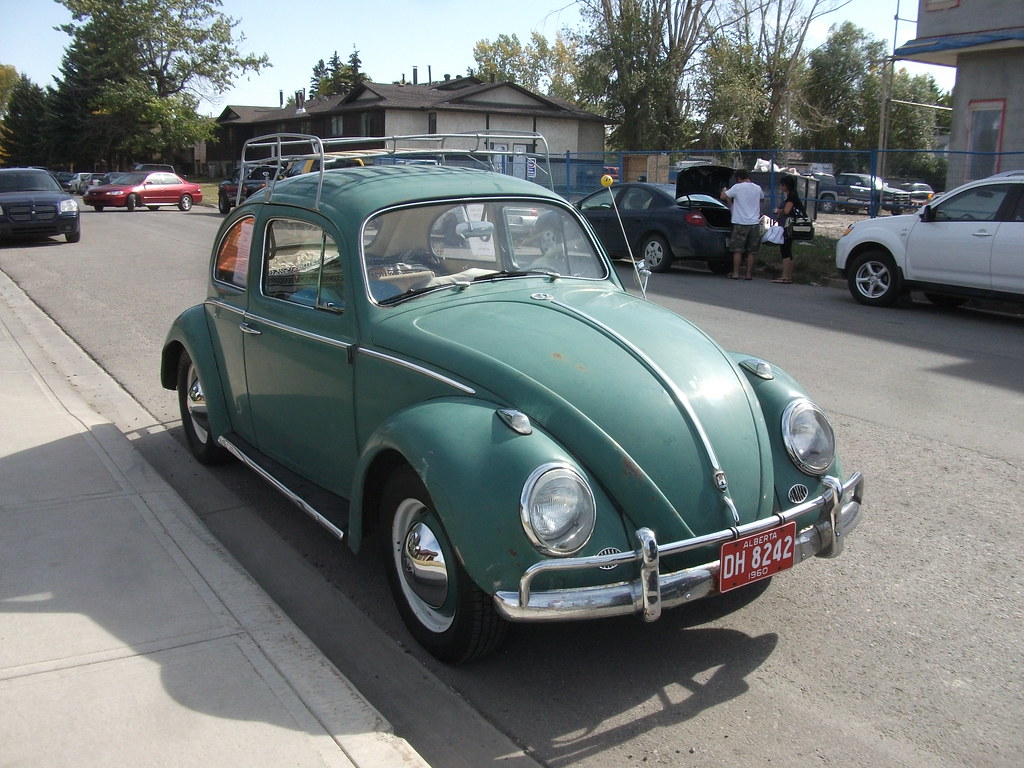
5. **Volkswagen Beetle (1967-1977)** Few cars possess the global recognition and endearing charm of the Volkswagen Beetle, and the models produced between 1967 and 1977 represent a sweet spot for those seeking an iconic daily driver. Its timeless appeal is matched by remarkably simplistic engineering, making it an enduring favorite among classic car enthusiasts who appreciate a straightforward and characterful ride. This little car has transcended mere transportation to become a cultural phenomenon.
At the heart of its daily drivability is its legendary air-cooled flat-four engine, a marvel of simplicity that is famously easy to maintain and incredibly capable of covering immense mileage. This robust powertrain, coupled with the Beetle’s uncomplicated design, means that owners can often handle basic upkeep themselves, fostering a deeper connection with their vehicle. It’s a mechanical friend that rewards a hands-on approach.
The Beetle also proves to be a surprisingly affordable classic, both to acquire and to keep on the road. With average yearly maintenance costs of just $394, it’s one of the most economical classics out there. Used prices typically range from $11,700 to $15,000, offering an accessible entry point to classic car ownership. As a symbol of practicality and durability, the Volkswagen Beetle continues to be a reliable, delightful, and iconic choice for daily driving.
Car Model Information: 1964 Volkswagen Beetle (Pre-1980) Base
Sp: uk
Name: Volkswagen Type 1,”Beetle”
Caption: 1965–1966 Volkswagen Käfer
Manufacturer: Volkswagen
Alt: A front-three quarters view of a pale-yellow Volkswagen Käfer. It features 165/80R15 tires, which shod 15×4. 5″ silver, circular wheels. The Käfer features a beetle-like body, and its window is open. The picture is taken with much greenery in the background, and the photo was edited to give it a more warmer tone.
Aka: List of names for the Volkswagen Type 1
Assembly: #Markets and assembly
Designer: Ferdinand Porsche
Class: Small family car
BodyStyle: Sedan (automobile),convertible
Production: 1938–2003,21,529,464 produced
Successor: Volkswagen Golf Mk1,Volkswagen Gol#First generation (Typ30, 1980),Volkswagen New Beetle
Layout: Rear-engine, rear-wheel-drive layout
Engine: Petrol,Volkswagen air-cooled engine,1192 cc H4,1285 cc H4,1493 cc H4,1584 cc H4
Transmission: manual transmission,Saxomat,Autostick
Wheelbase: convert
Length: convert
Width: convert
Height: 1500 mm
Abbr: on
Weight: convert
Categories: 1940s cars, 1950s cars, 1960s cars, 1970s cars, 1980s cars
Summary: The Volkswagen Beetle, officially the Volkswagen Type 1, is a small family car produced by the German company Volkswagen from 1938 to 2003. A global cultural icon known for its bug-like design, the Beetle is widely regarded as one of the most influential cars of the 20th century. Its production period of 65 years is the longest for any single generation of automobile, and its total production of 21.5 million units makes it the most produced car of a single platform in history and the second-highest of all nameplates manufactured in the 20th century.
The Beetle was conceived in the early 1930s. The leader of Nazi Germany, Adolf Hitler, decided there was a need for a people’s car—an inexpensive, simple, mass-produced car—to serve Germany’s new road network, the Reichsautobahn. The German engineer Ferdinand Porsche and his design team began developing and designing the car in the early 1930s, but the fundamental design concept can be attributed to Béla Barényi in 1925, predating Porsche’s claims by almost ten years. The result was the Volkswagen Type 1 and the introduction of the Volkswagen brand. Volkswagen initially slated production for the late 1930s, but the outbreak of war in 1939 meant that production was delayed until the war had ended. The car was originally called the Volkswagen Type 1 and marketed simply as the Volkswagen. It was not until 1968 that it was officially named the “Beetle”.
Volkswagen implemented designations for the Beetle in the 1960s, including 1200, 1300, 1500, 1600, 1302, and 1303. Volkswagen introduced a series of large luxury models throughout the 1960s and 1970s—comprising the Type 3, Type 4 and K70—to supplement the Beetle, but none of these models achieved the level of success that it did. In 1972, it became the best-selling car of all time, a position it retained for nearly three decades. Rapidly changing consumer preferences toward front-wheel drive compact hatchbacks in Europe prompted Volkswagen’s gradual shift away from rear-wheel drive, starting with the Golf in 1974. In the late 1970s and ’80s, Japanese automakers dominated some markets around the world, which contributed to the Beetle’s declining popularity.
The Beetle remains one of the best-selling cars of all time and is the first to sell over 20 million units. Over its lifespan, its design remained consistent, yet Volkswagen implemented over 78,000 incremental updates. These modifications were often subtle, involving minor alterations to its exterior, interior, colours, and lighting. Some more noteworthy changes included the introduction of new engines, models and systems, such as improved technology or comfort. The Beetle maintains a substantial cultural influence and is regarded as one of the most iconic vehicles in automotive history; its success largely influenced the way automobiles are designed and marketed, and propelled Volkswagen’s introduction of a Golf-based series of vehicles.
Get more information about: Volkswagen Beetle
Buying a high-performing used car >>>
Brand: Volkswagen Model: Beetle
Price: $34,997 Mileage: 669 mi.

6. **Volvo 240 (1986-1993)** The Volvo 240, affectionately known as the “Swedish brick,” is an enduring classic that stands as a testament to durability and safety, making it an ideal candidate for a classic daily driver. Manufactured between 1986 and 1993, its distinctive boxy design might seem unassuming, but beneath that practical exterior lies a car meticulously engineered to last, often achieving impressive mileage with consistent, regular maintenance. It’s a workhorse built for the long haul.
What truly sets the Volvo 240 apart for daily use is its unwavering reliability and robust construction. Owners frequently praise its ability to start every morning, rain or shine, and withstand years of demanding use. This dependable nature is a crucial factor for anyone considering a classic for their regular commute, offering peace of mind that many older vehicles cannot. It’s not about flashy performance; it’s about consistent, unyielding service.
Furthermore, the 240 offers remarkable affordability both in purchase and upkeep. With average yearly maintenance costs around $769, it’s a manageable sum for such a solid vehicle. Used prices range from $10,950 to $20,580, providing excellent value for a car with such a stellar reputation for longevity. This Swedish powerhouse is the perfect choice for those who prioritize reliability and practicality, ensuring its place as a staple of classic automotive excellence.
Car Model Information: 1993 Volvo 240 Base 4dr Sedan
Name: Volvo 200 Series
Caption: 1989 Volvo 240 GL station wagon
Manufacturer: Volvo Cars
Production: 1974–1993,2,862,573 produced
ModelYears: 1975–1993
Assembly: ubl
Predecessor: Volvo 140 Series,Volvo 164
Successor: Volvo 850,Volvo 760
Class: Mid-size car
BodyStyle: Sedan (automobile),station wagon
Layout: Front-engine, rear-wheel-drive
Platform: Volvo P platform
Related: Volvo 262C
Engine: collapsible list
Title: Petrol and diesel engines
Transmission: 4-speed manual,4-speed manual with overdrive,5-speed manual,3-speed automatic,4-speed automatic
Wheelbase: 104.3 in
Abbr: on
Length: convert
Width: convert
Height: convert
Designer: Jan Wilsgaard
Categories: 1980s cars, 1990s cars, All articles needing additional references, All articles with incomplete citations, All articles with unsourced statements
Summary: The Volvo 200 Series (designated internally as the 240 and 260 models) was a range of mid-size cars manufactured by Swedish automaker Volvo Cars from 1974 to 1993. Designed by Jan Wilsgaard, the series was developed from the Volvo 140 Series and incorporated safety innovations from Volvo’s VESC experimental safety vehicle program.
The 200 Series was produced in sedan, station wagon, and limited convertible body styles. Over 2.8 million units were manufactured during its 19-year production run, making it one of Volvo’s most successful model lines. The series established Volvo’s reputation for safety and durability, with many examples remaining in service decades after production ended.
Production overlapped with the introduction of the Volvo 700 Series in 1982. While the 260 Series was discontinued in 1984 and replaced by the 700 Series, the popular 240 model continued production until 1993. The final 240 was manufactured on 14 May 1993, concluding nearly two decades of production.
Get more information about: Volvo 200 Series
Buying a high-performing used car >>>
Brand: Volvo Model: 240
Price: $6,988 Mileage: 136,517 mi.
---Front-3869660-2560x1440.jpg)
7. **Mercedes-Benz SL-Class (2003-2008)** Stepping into a different realm of classic motoring, the R230 generation of the Mercedes-Benz SL-Class, produced from 2003 to 2008, offers a compelling blend of luxury, performance, and surprising practicality for daily use. This elegant roadster exudes an air of sophistication and engineering prowess, proving that you don’t have to sacrifice opulent comfort or dynamic capabilities when choosing a classic for your everyday journeys. It truly makes every drive feel special.
This SL-Class generation comes with a diverse range of trims, from the sophisticated SL350 to the powerful SL600, catering to a wide spectrum of budgets and performance preferences. This variety means that potential owners can find a model that perfectly aligns with their specific needs, whether they seek a smooth cruiser for city commutes or a more potent machine for highway excursions. Each variant offers a distinct yet equally rewarding experience.
Despite its luxurious pedigree, the R230 SL-Class also presents exceptional value in the classic market. With yearly maintenance costs averaging $959, it represents a manageable investment for a vehicle of this caliber. Used prices typically fall between $16,400 and $30,000, offering an accessible entry point into high-end classic ownership. Its sleek design, refined engineering, and comfortable cabin ensure that driving it every day feels both luxurious and genuinely rewarding, a true testament to its enduring appeal.” , “_words_section1”: “1963
Beyond the ordinary, our journey into the world of daily-drivable classics continues, proving that a dose of automotive history doesn’t mean sacrificing reliability or breaking the bank. These next seven exceptional cars and trucks each possess a unique charm and a fascinating story, all while remaining surprisingly viable and rewarding choices for the discerning modern driver who yearns for something truly special. Get ready to discover more unexpected heroes of the open road!
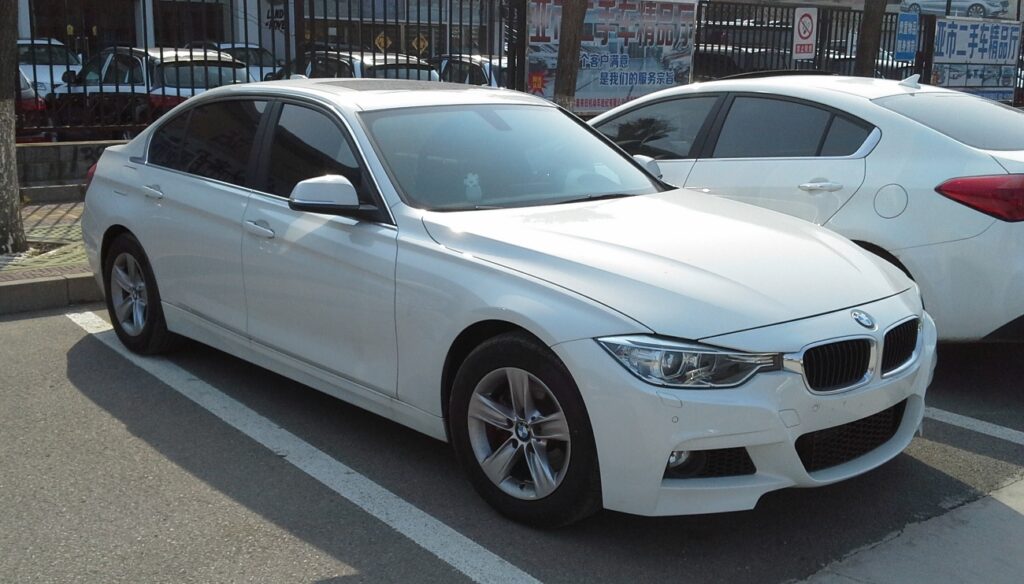
8. **BMW 3 Series (2006-2011)** For those who appreciate a harmonious blend of sophistication and driving dynamics, the BMW 3 Series, specifically the E90 generation from 2006 to 2011, is an absolutely brilliant choice. It masterfully combines luxury, spirited performance, and a rock-solid reputation for reliability into one incredibly appealing package. This isn’t just a car; it’s an extension of the driver, making every journey feel a little more engaging.
This versatile vehicle was offered in a myriad of trims, ensuring there was a 3 Series for practically every need and desire. Whether you were seeking an efficient, understated commuter or a truly sporty sedan ready to tackle winding backroads, BMW delivered. Its inherent adaptability makes it an enduring classic, effortlessly bridging the gap between everyday practicality and exhilarating driving.
What truly sweetens the deal for the classic car enthusiast on a budget is its affordability and dependability. With yearly maintenance costs averaging a reasonable $726, and used prices typically ranging between $9,100 and $14,300, it offers an accessible entry into premium motoring. The enduring popularity of this generation means a wide range of options are readily available, making it a no-brainer for those who crave premium features and a spirited driving experience in their daily routine.
Car Model Information: 2024 Ford Mustang GT Premium
Name: BMW 3 Series
Manufacturer: BMW
Production: 1975–present
Class: Compact executive car
Predecessor: BMW 02 Series
Categories: 1970s cars, 1980s cars, 1990s cars, 2000s cars, 2010s cars
Summary: The BMW 3 series is a line of compact executive cars manufactured by the German automaker BMW since May 1975. It is the successor to the 02 series and has been produced in seven generations.
The first generation of the 3 Series was only available as a 2-door saloon; the model range expanded to include a 4-door saloon, 2-door convertible, 2-door coupé, 5-door estate, 5-door liftback (“Gran Turismo”; discontinued in 2019) and 3-door hatchback body styles. Since 2013, the coupé and convertible models have been marketed as the 4 Series; these styles no longer being included in the 3 Series.
The 3 Series is BMW’s best-selling model line, accounting for around 30% of the BMW brand’s annual total car sales, and has won numerous awards throughout its history. The M version of the 3 series, M3, debuted with the E30 M3 in 1986.
Get more information about: BMW 3 Series
Buying a high-performing used car >>>
Brand: BMW Model: 3 Series
Price: $48,997 Mileage: 24,328 mi.
Read more about: The True Cost of Ownership: 14 Vehicles Known to Relentlessly Drain Your Savings Through Constant Repairs
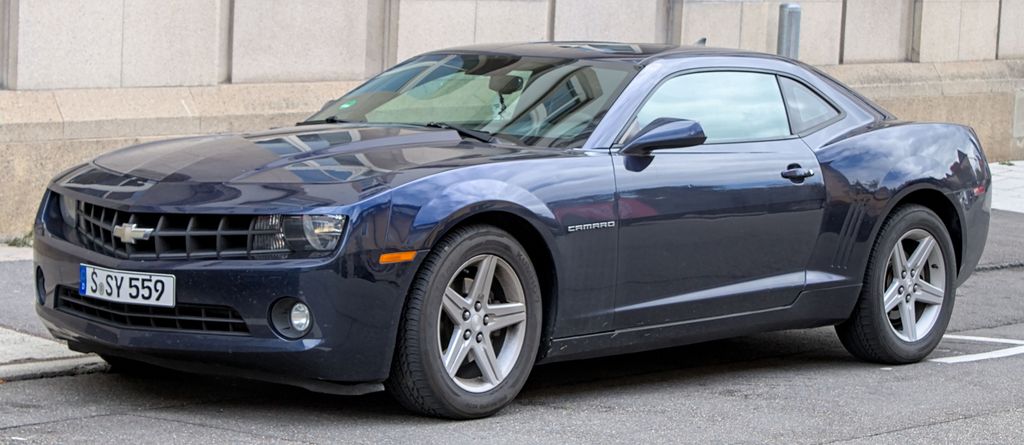
9. **Chevrolet Camaro (2010-2015)** The fifth-generation Chevrolet Camaro, roaring onto the scene from 2010 to 2015, perfectly encapsulates the resurgence of retro muscle car styling, bringing that undeniable American flair into the modern era. It’s a car that commands attention, blending aggressive looks with truly capable engineering, making it a compelling option for a daily driver that turns heads wherever it goes.
Beneath its muscular exterior, this Camaro offered robust V6 and V8 engine options, delivering a potent and versatile performance that satisfies both the enthusiastic driver and the daily commuter alike. Whether you longed for the raw, thrumming power of a V8 or the more economical yet still spirited nature of a V6, this generation had you covered. It’s a testament to its ability to marry thrilling power with surprising practicality.
Ownership of this modern classic muscle car is also surprisingly budget-friendly. With used prices typically falling between $26,600 and $67,000, depending on the trim and specification, it offers an attainable entry into muscle car ownership. The average yearly maintenance cost of $663 further enhances its appeal, ensuring that its striking presence and versatility make it a superb choice for those who demand both performance and practicality in their everyday ride.
Car Model Information: 1968 Chevrolet Camaro
Name: Chevrolet Camaro
Manufacturer: Chevrolet
Production: 1966–2002,2009–2023
ModelYears: 1967–2002,2010–2024
Class: Pony car
BodyStyle: coupe,convertible
Platform: GM F platform,GM Zeta platform,GM Alpha platform
Layout: Front-engine, rear-wheel-drive layout
Categories: 1970s cars, 1980s cars, 1990s cars, 2+2 coupés, 2000s cars
Summary: The Chevrolet Camaro is a mid-size American automobile manufactured by Chevrolet, classified as a pony car. It first went on sale on September 29, 1966, for the 1967 model year and was designed to compete with the Ford Mustang. The Camaro shared its platform and major components with the Firebird, produced by General Motors’ Pontiac division that was also introduced for the 1967 model year.
Four distinct generations of the Camaro were developed before production ended in 2002. The nameplate was revived on a concept car that evolved into the fifth-generation Camaro; production started on March 16, 2009.
Production of the sixth generation of the Camaro ended in December 2023, for the 2024 model year.
Get more information about: Chevrolet Camaro
Buying a high-performing used car >>>
Brand: Chevrolet Model: Camaro
Price: $79,980 Mileage: 1,713 mi.
Read more about: Affordable V8 Muscle Cars: Modern Icons and Classic Legends

10. **Pontiac Fiero (1984-1988)** Prepare to be intrigued by a true hidden gem of automotive history: the Pontiac Fiero. This mid-engine sports car, produced from 1984 to 1988, offered a truly distinctive blend of avant-garde style and practical functionality, turning heads and challenging conventions in its day. It was a bold statement, daring to bring a unique layout to the masses.
Despite an initial reputation for reliability quirks, the Fiero has since been celebrated by a dedicated community, with clever aftermarket fixes transforming it into a surprisingly dependable option for daily use. This remarkable resilience and the passion of its owners highlight that a car’s story isn’t always defined by its first chapter. It truly is a testament to perseverance and ingenuity.
One of the Fiero’s most compelling attributes for today’s daily driver is its sheer affordability. With used prices typically ranging from $6,000 to $12,000, it represents an incredibly attractive classic that’s within reach for many enthusiasts. Coupled with annual maintenance costs hovering around a manageable $600, the Fiero emerges as an affordable, unique, and spirited daily driver – a truly underrated classic worth rediscovering.
Car Model Information: 1988 Pontiac Fiero GT
Name: Pontiac Fiero
Caption: 1988 Fiero Formula
Manufacturer: Pontiac (automobile)
Production: August 1983 – August 16, 1988,370,168 produced
ModelYears: 1984 – 1988
Successor: Pontiac Solstice
Assembly: Pontiac, Michigan
Designer: Hulki Aldikacti,George Milidrag
Class: Sports car
BodyStyle: fastback,notchback
Platform: GM P platform
Layout: Rear mid-engine, rear-wheel-drive layout
Engine: {{cvt,151,CID,L,1,disp=flip,Iron Duke engine#LR8,Inline-four engine
Transmission: Turbo-Hydramatic 125,Manual transmission,Getrag 282 transmission,Isuzu
Wheelbase: 2373 mm
Abbr: on
Length: 4072 mm
Width: 1750 mm
Height: 1191 mm
Weight: 1116 to
Categories: All articles with unsourced statements, Articles with short description, Articles with unsourced statements from February 2012, Articles with unsourced statements from July 2024, Articles with unsourced statements from September 2011
Summary: The Pontiac Fiero is a rear mid-engine, light sports car manufactured and marketed by Pontiac for model years 1984 – 1988. Intended as an economical commuter car with modest performance aspirations, it was Pontiac’s first two-seater since their 1926 to 1938 coupes, and the first mass-produced, rear mid-engine car by any American manufacturer.
In addition to using 4- and 6-cylinder engines to help Pontiac meet America’s ‘CAFE’ average fuel economy requirements, the Fiero’s chassis and structure technology used non-load-bearing, composite body-panels, contributing to the car’s light-weight and its unique selling proposition. Pontiac engineers modified the design over its life to enhance its performance and reposition the two-seater closer to the implications of its sporty configuration.
The Fiero 2M4 (two-seat, mid-engine, four-cylinder) placed on Car and Driver magazine’s Ten Best list for 1984, and was the Official Pace Car of the Indianapolis 500 for 1984.
A total of 370,168 Fieros were manufactured over five years’ production, its mild performance, reliability and safety issues becoming points of criticism. The Fiero was discontinued after annual sales fell steadily.
Get more information about: Pontiac Fiero
Buying a high-performing used car >>>
Brand: Pontiac Model: Fiero
Price: $15,500 Mileage: 94,124 mi.
Read more about: Unearthing the Unexpected: 10 Forgotten 1980s GM Muscle Cars That Command Attention Today

11. **MKIV Toyota Supra (1993-1998)** The MKIV Toyota Supra, manufactured between 1993 and 1998, isn’t just a car; it’s a legend. Widely regarded as one of the most admired and desired Japanese sports cars of all time, it confidently straddles the line between established classic and future icon. Its enduring appeal lies not just in its stunning aesthetics but in its engineering prowess that promised, and delivered, incredible performance.
At the heart of its legendary status is the stock twin-turbo 2JZ engine, a marvel that produced a potent 320 horsepower right off the factory floor. What truly sets it apart, however, is the almost unbelievable aftermarket and tuning community that has proven this engine can reliably handle modifications pushing well beyond 1,000 horsepower. Whether you desire a factory-tuned beast or a heavily customized rocket ship, the Supra obliges.
Beyond the engine, the Supra’s interior is an experience in itself. The controls dramatically sweep out and around the driver, creating a cockpit that vividly resembles the inside of a fighter jet. It’s a design that feels both futuristic and driver-centric, and it certainly never gets old. This striking interior, combined with classic Toyota reliability, makes the MKIV Supra an ideal companion for enhancing your daily commute, turning every trip into an adventure.
Car Model Information: 1995 Toyota Supra SZ
Name: Toyota Supra
Caption: Toyota GR Supra (J29/DB)
Manufacturer: Toyota
Aka: unbulleted list
Production: unbulleted list
Class: Sports car
BodyStyle: fastback,coupé
Layout: Front-engine, rear-wheel-drive layout
Predecessor: Toyota Celica (A20)
Categories: 1980s cars, 1990s cars, 2000s cars, 2010s cars, 2020s cars
Summary: The Toyota Supra (Japanese: トヨタ・スープラ, Hepburn: Toyota Sūpura) is a sports car and grand tourer manufactured and developed by the Toyota Motor Corporation beginning in 1978. The name “supra” is a definition from the Latin prefix, meaning “above”, “to surpass” or “go beyond”.
The initial four generations of the Supra were produced from 1978 to 2002. The fifth generation has been produced since March 2019 and later went on sale in May 2019. The styling of the original Supra was derived from the Toyota Celica, but it was longer. Starting in mid-1986, the A70 Supra became a separate model from the Celica. In turn, Toyota also stopped using the prefix Celica and named the car Supra. Owing to the similarity and past of the Celica’s name, it is frequently mistaken for the Supra, and vice versa. The first, second and third generations of the Supra were assembled at the Tahara plant in Tahara, Aichi, while the fourth generation was assembled at the Motomachi plant in Toyota City. The 5th generation of the Supra is assembled alongside the G29 BMW Z4 in Graz, Austria by Magna Steyr.
The Supra traces much of its roots back to the 2000GT owing to an inline-6 layout. The first three generations were offered with a direct descendant to the Crown’s and 2000GT’s M engine. Interior aspects were also similar, as was the chassis code “A”. Along with this name, Toyota also included its own logo for the Supra. It was derived from the original Celica logo, being blue instead of orange. This logo was used until January 1986, when the A70 Supra was introduced. The new logo was similar in size, with orange writing on a red background, but without the dragon design. That logo, in turn, was on Supras until 1991 when Toyota switched to its current oval company logo. The dragon logo was a Celica logo regardless of what colour it was. It appeared on the first two generations of the Supra because they were officially Toyota Celicas. The dragon logo was used for the Celica line until it was also discontinued.
In 1998, Toyota ceased sales of the fourth-generation Supra in the United States. Production of the fourth-generation Supra for worldwide markets ended in 2002. In January 2019, the fifth-generation Supra, which was co-developed with the G29 BMW Z4, was introduced.
Get more information about: Toyota Supra
Buying a high-performing used car >>>
Brand: Toyota Model: Supra
Price: $49,999 Mileage: 16,556 mi.
Read more about: The Unforgettable Classics: 13 Legendary Cars Car Enthusiasts Deeply Regret Letting Go Of, and Their Skyrocketing Values Today
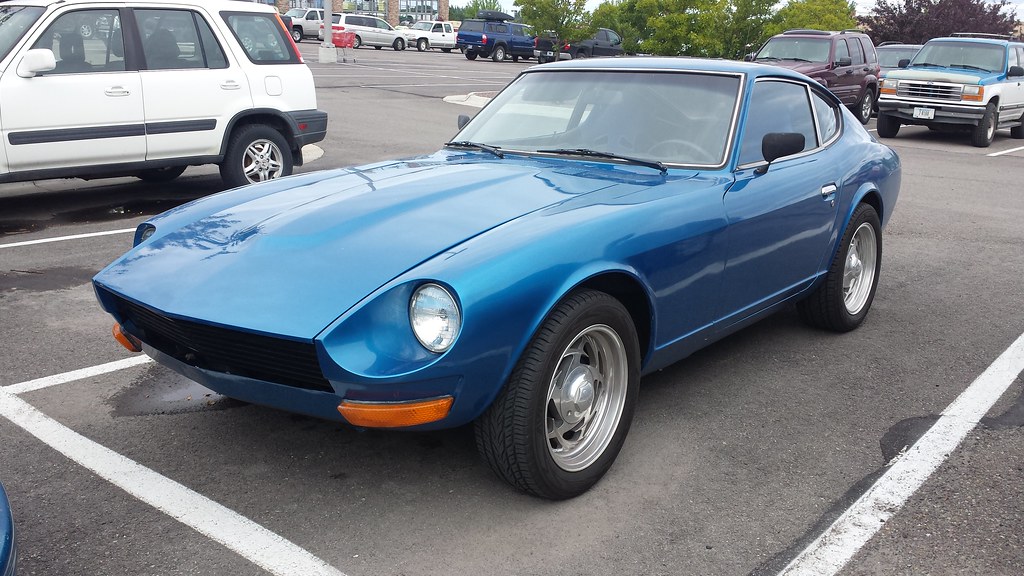
12. **Datsun 240z (1970-1973)** Stepping back to the early 1970s, we encounter the original Z car, the Datsun 240z, a vehicle born from Datsun’s ambitious attempt to craft a fun-to-drive sports car that wouldn’t be out of reach for the everyday consumer. It’s safe to say they didn’t just succeed; they created an icon that continues to capture hearts today. This charming roadster was a revelation, perfectly balancing performance with attainability.
The 240z was engineered as a lightweight, rear-wheel-drive, inline-six analog car, which delivered an unadulterated and engaging driving experience. It wasn’t just about raw power; it was about the connection between driver and machine, wrapped in a sleek design that looked fantastic on any road. This careful balance of attributes quickly cemented its place in automotive history.
Today, the Datsun 240z continues to appreciate in value, a powerful testament to its status as a true driver’s car. Its respectable 7.8-second 0-60 mph time was particularly appealing in an era when many contemporary sports cars were surprisingly sluggish compared to family sedans. This combination of timeless appeal, engaging performance, and historical significance makes the 240z a delightfully rewarding choice for a classic daily driver.
Car Model Information: 1972 Datsun 240Z
Name: Nissan Fairlady Z (Datsun 240Z, 260Z, and 280Z)
Aka: unbulleted list
Manufacturer: Nissan
Production: 1969–1978
Class: Sports car
Layout: Front-engine, rear-wheel-drive layout
Assembly: Hiratsuka, Kanagawa
BodyStyle: unbulleted list
Designer: Yoshihiko Matsuo
Predecessor: Datsun Sports
Successor: Nissan Fairlady Z (S130)
Caption: 1970–1973 Nissan Fairlady Z
Categories: 1970s cars, All Wikipedia articles written in American English, All articles with unsourced statements, Articles with short description, Articles with unsourced statements from February 2021
Summary: The Nissan S30, sold in Japan as the Nissan Fairlady Z but badged as the Datsun 240Z, 260Z, and 280Z for export, are 2-seat sports cars and 2+2 GT cars produced by Nissan from 1969 until 1978. The S30 was conceived of by Yutaka Katayama, the President of Nissan Motor Corporation U.S.A., and designed by a team led by Yoshihiko Matsuo, the head of Nissan’s Sports Car Styling Studio. It is the first car in Nissan’s Z series of sports cars.
The S30 had four-wheel independent suspension and a powerful straight-six engine with an overhead camshaft, features identified with far more expensive premium European sports cars and coupés such as the Jaguar E-Type and BMW 2800 CS, but absent from similarly priced sports cars such as the Alfa Romeo Spider, MGB and Opel GT, which had smaller four-cylinder engines and rear live axles. The S30’s styling, engineering, relatively low price, and impressive performance resonated with the public, received a positive response from both buyers and the motoring press, and immediately generated long waiting lists.
As a halo car, the S30 broadened the acceptance of Japanese carmakers beyond their image as producers of practical and reliable but prosaic and unfashionable economy cars. Datsun’s growing dealer network—compared to limited production imported sports cars manufactured by Jaguar, BMW, Porsche, Alfa Romeo, and Fiat—ensured both easy purchase and ready maintenance.
The S30 was initially sold alongside the smaller four-cylinder Datsun Sports, which was dropped from production in 1970. The S30 240Z is unrelated to the later 240SX, sold as the Silvia in Japan.
Get more information about: Nissan Fairlady Z (S30)
Buying a high-performing used car >>>
Brand: Datsun Model: 240z
Price: $32,995 Mileage: 122,000 mi.
Read more about: 11 Iconic Classics: Your Ultimate Guide to Restoring Affordable Dreams Instead of Buying Them
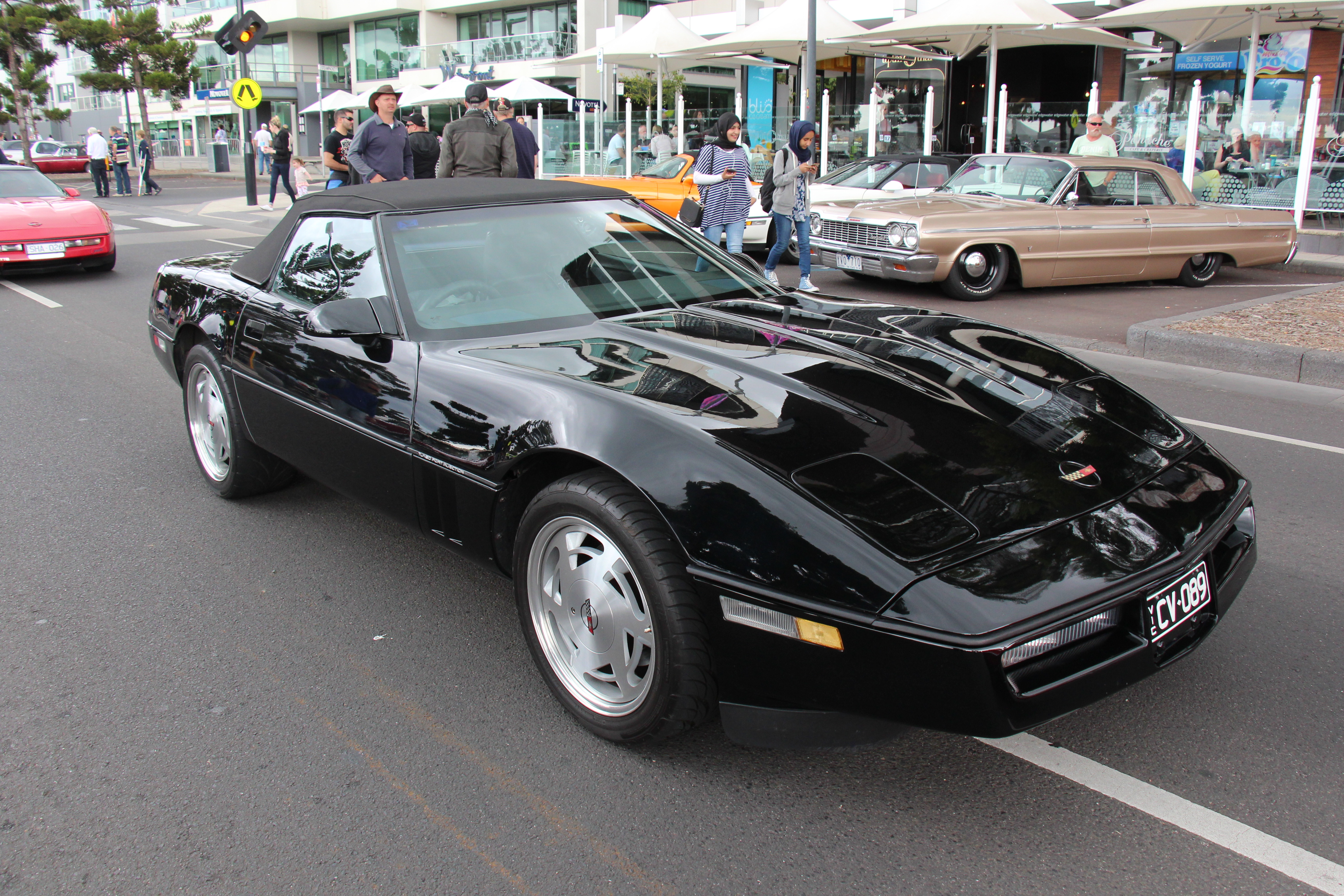
13. **C4 Corvette (1992-1996)** When we talk about quintessential examples of high-powered American V8s, the fourth-generation Corvette, affectionately known as the C4, immediately springs to mind. Specifically, the models produced between 1992 and 1996 embody that distinct American muscle car spirit, proving that there truly is “no replacement for displacement” with its formidable 5.8L engine under the hood. It’s a beast, but a beautiful one.
This generation of Corvette boasts long, sloping body lines that effortlessly exude speed and elegance, a design that has aged gracefully. What’s more, it offers remarkable versatility, available as a sleek coupe, a convenient targa top for open-air thrills, or a full-blown convertible. This array of choices means you can tailor your classic American V8 experience to your personal preference.
Whether you’re cruising with the windows down, letting the wind rush through the cabin, or going full top-down convertible style, the C4 Corvette is the quintessential companion for gliding down your local strip on a warm summer evening. It’s a car designed for enjoyment, making every journey feel like a celebration of American automotive prowess, and a truly enjoyable classic for regular use.
Car Model Information: 2023 Chevrolet Corvette 3LZ
Name: Chevrolet Corvette
Caption: 2021 Chevrolet Corvette C8
Manufacturer: Chevrolet
Production: 1953–present
ModelYears: bulleted list
Assembly: bulleted list
Class: Sports car
BodyStyle: coupé
Layout: Front-engine, rear-wheel-drive layout,Rear mid-engine, rear-wheel-drive layout
Categories: 1950s cars, 1960s cars, 1970s cars, 1980s cars, 1990s cars
Summary: The Chevrolet Corvette is a line of American two-door, two-seater sports cars manufactured and marketed by General Motors under the Chevrolet marque since 1953. Throughout eight generations, indicated sequentially as C1 to C8, the Corvette is noted for its performance, distinctive styling, lightweight fiberglass or composite bodywork, and competitive pricing. The Corvette has had domestic mass-produced two-seater competitors fielded by American Motors, Ford, and Chrysler; it is the only one continuously produced by a United States auto manufacturer. It serves as Chevrolet’s halo car.
In 1953, GM executives accepted a suggestion by Myron Scott, then the assistant director of the Public Relations department, to name the company’s new sports car after the corvette, a small, maneuverable warship. Initially, a relatively modest, lightweight 6‑cylinder convertible, subsequent introductions of V8 engines, competitive chassis innovations, and rear mid-engined layout have gradually moved the Corvette upmarket into the supercar class. In 1963, the second generation was introduced in coupe and convertible styles. The first three Corvette generations (1953–1982) employed body-on-frame construction, and since the C4 generation, introduced in 1983 as an early 1984 model, Corvettes have used GM’s unibody Y‑body platform. All Corvettes used front mid-engine configuration for seven generations, through 2019, and transitioned to a rear mid-engined layout with the C8 generation.
Initially manufactured in Flint, Michigan, and St. Louis, Missouri, the Corvette has been produced in Bowling Green, Kentucky, since 1981, which is also the location of the National Corvette Museum. The Corvette has become widely known as “America’s Sports Car.” Automotive News wrote that after being featured in the early 1960s television show Route 66, “the Corvette became synonymous with freedom and adventure,” ultimately becoming both “the most successful concept car in history and the most popular sports car in history.”
Get more information about: Chevrolet Corvette
Buying a high-performing used car >>>
Brand: Chevrolet Model: Corvette
Price: $132,990 Mileage: 1,614 mi.
Read more about: The New American Dream: Why Ford Broncos and Classic Chevys Are Reaching Astounding Values Among the Ultra-Rich
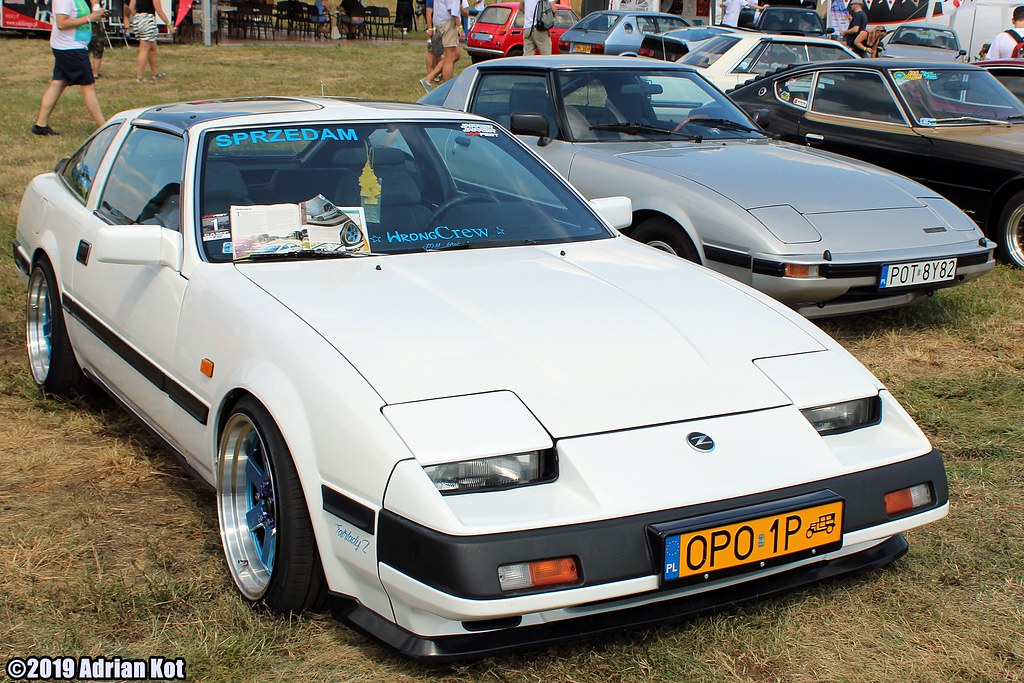
14. **Nissan 300ZX TT (1990-1996)** The Nissan 300ZX Twin Turbo, produced from 1990 to 1996, is the kind of car that ignites a fierce longing among enthusiasts. While a naturally aspirated version existed, it’s the twin-turbo model that truly captivates, representing the fourth generation of the iconic Z-car lineage. Its timeless design still looks remarkably modern today, a testament to Nissan’s forward-thinking approach.
Though perhaps not reaching the dizzying heights of appreciation seen by its 90s rival, the MKIV Supra, the TT 300ZX was a formidable competitor in its own right. Notably, it stood as the last Z-car to come turbocharged from the factory for many years, a significant piece of its heritage that adds to its allure. It’s a piece of JDM history that you can actually drive and enjoy every day.
Inside, the 300ZX offers a simple yet intensely driver-focused interior, a clear indication that Nissan’s primary intention was to create a powerful car with truly excellent handling. Every element feels purposefully placed to enhance the driving experience, making it a joy to pilot. For those seeking a blend of classic JDM style, potent performance, and an engaging analog feel, the twin-turbo 300ZX is a compelling choice for a classic daily driver.
**The Enduring Allure of the Daily Classic**
As we pull the brakes on our exploration of these incredible machines, it’s clear that the dream of daily driving a classic car is far from a romantic fantasy. These vehicles offer a captivating cocktail of timeless style, surprising reliability, and an undeniable charm that often feels absent from their modern counterparts. From the thrilling performance of a Toyota Supra to the unyielding reliability of a Volvo, or the iconic simplicity of a Datsun 240z, there’s a classic out there perfectly suited to a wide range of preferences and budgets.
Car Model Information: 1990 Nissan 300ZX GS
Name: Nissan 300ZX
Class: Grand Tourer
Manufacturer: Nissan
Production: 1983–2000
Assembly: ubl
Aka: Nissan Fairlady Z
Layout: Front-engine, rear-wheel-drive layout
Predecessor: Nissan Fairlady Z (S130)
Successor: Nissan 350Z
Categories: 1990s cars, 2+2 coupés, All articles needing additional references, All articles with unsourced statements, Articles needing additional references from May 2021
Summary: The Nissan 300ZX is a sports car that was produced across two different generations. As with all other versions of the Z, the 300ZX was sold within the Japanese domestic market under the name Fairlady Z.
It was sold in Japan from 1983 to 2000 and in the United States from 1984 to 1996, the 300ZX name followed the numerical convention initiated with the original Z car, the Nissan Fairlady Z (S30), which was marketed in the U.S. as the 240Z. The addition of the “X” to the car’s name was a carryover from its predecessor, the 280ZX, to signify the presence of more luxury and comfort oriented features. The first generation 300ZX known as the Z31 model was produced from 1983 through 1989 and was a sales success becoming the highest volume Z-car for Nissan.
To become even more competitive in the sports car market, the second generation 300ZX was driven up-market. It was redesigned to be faster and to feature more advanced technology, but came with a higher price than its predecessor, with consecutive price increases each model year of availability. As such, sales dwindled each year, a trend in the higher end sports car market at the time, and Nissan placed a hiatus on selling new Nissan Z-Cars to the US after the 1996 model year, though the car would continue to be sold in the Japan domestic market until 2001 in low production numbers.
Car and Driver placed the Z32 on its Ten Best list for seven consecutive years, each model year of its availability in the United States. Motor Trend awarded it as the 1990 Import Car of the Year. The Nissan 350Z, officially the Z33 generation Z-Car, succeeded the 300ZX in 2003.
Get more information about: Nissan 300ZX
Buying a high-performing used car >>>
Brand: Nissan Model: 300ZX
Price: $24,651 Mileage: 21,680 mi.
Owning one of these automotive legends is more than just transportation; it’s an experience, a connection to history, and a constant source of joy. With proper care and a hands-on approach, these timeless classics aren’t just museum pieces; they’re dependable, delightful companions ready to turn every mundane journey into a memorable adventure. So, go ahead, embrace the legacy, and truly enjoy the journey, every single day.

